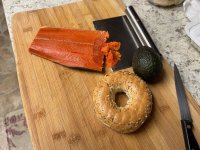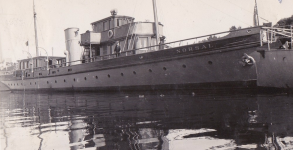But yes, aroma is the respectful word to describe a smell.
Like the aroma when you open the lid of long cooked goat meat curry, which has had whole spices added to it, and is covered to help the cooking process.
Or 'Undhiyo', local dish here in Gujarat, Yam and many other ingredients, cooked in an upside down clay pot buried under a fire, lid closed with dough...the aroma released when you open the lid...that is what I meant.
Even when an oven door is opened, and the cake gives off the smell of things like cinnamon, and other things...or freshly baked bread.
Like the aroma when you open the lid of long cooked goat meat curry, which has had whole spices added to it, and is covered to help the cooking process.
Or 'Undhiyo', local dish here in Gujarat, Yam and many other ingredients, cooked in an upside down clay pot buried under a fire, lid closed with dough...the aroma released when you open the lid...that is what I meant.
Even when an oven door is opened, and the cake gives off the smell of things like cinnamon, and other things...or freshly baked bread.
Burning oil. Reminds me of crewing aboard a small ship when I was a teenager. The galley had a converted to diesel wood burning stove, oven, and grill. One morning at breakfast, I had the worst pancakes ever served to me in my life. I was extremely hungry, but just couldn't eat them. When I emptied my plateful into the ocean, seagulls swooped in, but dropped them back into the salt chuck. I looked at the cook, and laughed to the cook- Look Kenny! Even the seagulls won't eat your pancakes!Any posts about the smells that remind you of food and places you had it?
Or we start a new thread?
I lost a lot of weight that season. Kenny out of the passengers and crew was the only one who didn't laugh.
Here the bakeries use oil as fuel all the time, wood is actually expensive, and a fire hazard, if chips are used and not carefully stored away from flames and sparks.
Those in the city use electricity or gas as well.
If the burner is set properly for air-fuel mix, it does not give an unpleasant smell while burning.
Heavy fuel oil does have a bad smell, one type is called furnace oil, it takes a period of ten minutes to start burning...we used rags soaked in engine or diesel oil to start the fire, then blowers, then gradually start the gear pumps to force oil in the burners, once it warmed up, not so bad, but start would have you coughing...it was in the furnaces at my uncle's leaf spring plant.
Anyway, I read about James Herriot's journey on a small ship with a load of cattle from the UK to Denmark / Netherlands, his description of the food, and how the cook coped with stormy conditions in a tiny galley, interesting.
Another journey described was how the cooks in long distance trains in China prepared stir fried food, directly slicing ingredients and tossing them into the wok, and that on a swaying train (now world clss, coin stays straight on edge), and the resulting food...nice.
For me, the smell of frying onions, just going brown, at the right temperature, it is evocative.
And 'kanji', water from a short time preserve.
Filter coffee, at the right temperature, with a thick milky base...
Frying at a food stall, fritters and dip fried green chilies.
Tandoor, chicken and goat / lamb...fish not so much, the fish sold here is sea fish, oily. River fish is more neutral in taste and smell.
The smell of hot fresh roti on a cold winter day, served by your mother at home...
The small of ghee rubbed on a hot roti after cooking the roti...aah, life.
I used to live in a flat behind a South Indian restaurant here in Baroda, the smell of 'sambar' and 'dosa' reminded me of my days in Bangalore...
More from others here, please.
Those in the city use electricity or gas as well.
If the burner is set properly for air-fuel mix, it does not give an unpleasant smell while burning.
Heavy fuel oil does have a bad smell, one type is called furnace oil, it takes a period of ten minutes to start burning...we used rags soaked in engine or diesel oil to start the fire, then blowers, then gradually start the gear pumps to force oil in the burners, once it warmed up, not so bad, but start would have you coughing...it was in the furnaces at my uncle's leaf spring plant.
Anyway, I read about James Herriot's journey on a small ship with a load of cattle from the UK to Denmark / Netherlands, his description of the food, and how the cook coped with stormy conditions in a tiny galley, interesting.
Another journey described was how the cooks in long distance trains in China prepared stir fried food, directly slicing ingredients and tossing them into the wok, and that on a swaying train (now world clss, coin stays straight on edge), and the resulting food...nice.
For me, the smell of frying onions, just going brown, at the right temperature, it is evocative.
And 'kanji', water from a short time preserve.
Filter coffee, at the right temperature, with a thick milky base...
Frying at a food stall, fritters and dip fried green chilies.
Tandoor, chicken and goat / lamb...fish not so much, the fish sold here is sea fish, oily. River fish is more neutral in taste and smell.
The smell of hot fresh roti on a cold winter day, served by your mother at home...
The small of ghee rubbed on a hot roti after cooking the roti...aah, life.
I used to live in a flat behind a South Indian restaurant here in Baroda, the smell of 'sambar' and 'dosa' reminded me of my days in Bangalore...
More from others here, please.
A number of my favorite dishes start with the "Holy Trinity" as it's known in cajun and creole cooking. It's simply onions (yellow if available), green bell pepper and celery but it always lights me up with anticipation... I think a crawfish etouffee is in order.
I doubt if what you've described applies in any way to the black smoke emitting set up I mentioned in the galley of a ship I worked aboard. Unless the meals prepared on what you mention also had the taste of diesel fuel from the generator tanks infused into the food.Here the bakeries use oil as fuel all the time, wood is actually expensive, and a fire hazard, if chips are used and not carefully stored away from flames and sparks.
Those in the city use electricity or gas as well.
If the burner is set properly for air-fuel mix, it does not give an unpleasant smell while burning.
Heavy fuel oil does have a bad smell, one type is called furnace oil, it takes a period of ten minutes to start burning...we used rags soaked in engine or diesel oil to start the fire, then blowers, then gradually start the gear pumps to force oil in the burners, once it warmed up, not so bad, but start would have you coughing...it was in the furnaces at my uncle's leaf spring plant.
Anyway, I read about James Herriot's journey on a small ship with a load of cattle from the UK to Denmark / Netherlands, his description of the food, and how the cook coped with stormy conditions in a tiny galley, interesting.
Another journey described was how the cooks in long distance trains in China prepared stir fried food, directly slicing ingredients and tossing them into the wok, and that on a swaying train (now world clss, coin stays straight on edge), and the resulting food...nice.
For me, the smell of frying onions, just going brown, at the right temperature, it is evocative.
And 'kanji', water from a short time preserve.
Filter coffee, at the right temperature, with a thick milky base...
Frying at a food stall, fritters and dip fried green chilies.
Tandoor, chicken and goat / lamb...fish not so much, the fish sold here is sea fish, oily. River fish is more neutral in taste and smell.
The smell of hot fresh roti on a cold winter day, served by your mother at home...
The small of ghee rubbed on a hot roti after cooking the roti...aah, life.
I used to live in a flat behind a South Indian restaurant here in Baroda, the smell of 'sambar' and 'dosa' reminded me of my days in Bangalore...
More from others here, please.
Thankfully it lasted only one season.
Actually, diesel burns fiercely, even in internal combustion engines, it does not explode like gasoline does in a spark ignition engine.
I think they used the wrong fuel, or the burners were not set up properly on board your ship, or the conversion not done properly.
We get two types of diesel here, one is called LDO, light diesel oil, used by bakeries and aluminum die casting shops, among others.
High Speed Diesel is truck and car fuel.
Marine fuel has a flow point of 30 Celsius, quite a different distillate, used for the Brobdignagian main engines on ships.
10,500 HP on a 7 cylinder two stroke is a 'small' engine.
Interesting topic, the fuel consumption on those has satyed at 118 gm / BHP-hour for 40 years, despite other improvements in fuel injection and chamber design.
Fuel efficient tractors average about 200, in comparison, so those are taking only 60% of the average vehicle as fuel.
I think they used the wrong fuel, or the burners were not set up properly on board your ship, or the conversion not done properly.
We get two types of diesel here, one is called LDO, light diesel oil, used by bakeries and aluminum die casting shops, among others.
High Speed Diesel is truck and car fuel.
Marine fuel has a flow point of 30 Celsius, quite a different distillate, used for the Brobdignagian main engines on ships.
10,500 HP on a 7 cylinder two stroke is a 'small' engine.
Interesting topic, the fuel consumption on those has satyed at 118 gm / BHP-hour for 40 years, despite other improvements in fuel injection and chamber design.
Fuel efficient tractors average about 200, in comparison, so those are taking only 60% of the average vehicle as fuel.
Actually, diesel burns fiercely, even in internal combustion engines, it does not explode like gasoline does in a spark ignition engine.
I think they used the wrong fuel, or the burners were not set up properly on board your ship, or the conversion not done properly.
We get two types of diesel here, one is called LDO, light diesel oil, used by bakeries and aluminum die casting shops, among others, static use.
High Speed Diesel (HSD) is truck, tractor and car fuel, mobile use, or generators, among other things.
Marine fuel has a flow point of 30 Celsius, quite a different distillate, used for the Brobdignagian main engines on ships.
10,500 HP on a 7 cylinder two stroke is a 'small' engine.
Interesting topic, the fuel consumption on those has satyed at 118 gm / BHP-hour for 40 years, despite other improvements in fuel injection and chamber design.
Fuel efficient tractors average about 200, in comparison, so those are taking only 60% of the average vehicle as fuel.
I think they used the wrong fuel, or the burners were not set up properly on board your ship, or the conversion not done properly.
We get two types of diesel here, one is called LDO, light diesel oil, used by bakeries and aluminum die casting shops, among others, static use.
High Speed Diesel (HSD) is truck, tractor and car fuel, mobile use, or generators, among other things.
Marine fuel has a flow point of 30 Celsius, quite a different distillate, used for the Brobdignagian main engines on ships.
10,500 HP on a 7 cylinder two stroke is a 'small' engine.
Interesting topic, the fuel consumption on those has satyed at 118 gm / BHP-hour for 40 years, despite other improvements in fuel injection and chamber design.
Fuel efficient tractors average about 200, in comparison, so those are taking only 60% of the average vehicle as fuel.
I guess I didn't mention it. The cooking and baking stuff was modified from 1950s wood burning equipment, modified by the previous Captain proprietor. No, it did not burn the fuel tanks supplying the mains and generator engines fiercely at all. Viewed openly, the flames were fluttering and smoked extensively. My name is Mtchell, and I was a ticketed watch keeping Mate aboard the MV Norsal in 1980. I don't recall seeing you there. Were you passenger or crew?
Goes easy on him MIT. There are two sides to his card. He is completely unoffended by any rebuttable.
And he is a man of all knowledge. If he is AI, he is so much better than anything I have seen. So why do it here? Are we a tester because we have the smarts?
And he is a man of all knowledge. If he is AI, he is so much better than anything I have seen. So why do it here? Are we a tester because we have the smarts?
Last edited:
Substitute the salmon with tomato and olive oil instead of the avocado and maybe the bread could be that dried one that you resurge with water...but only in the summer the tomatoes are worth eatingSometime three ingredients is all that's needed.
As I am always intrigued by people who chose to go to sea, given I get seasick crossing the English channel (I know embarassing given I supposedly come from a seafairing nation, but as far as I can tell my ancestors were farmers back 1000 years or more) I wondered if there were any pictures online to give me an idea of the horrors you put up with. I can only find an MV Norsel which was a norwegian icebreaker/sealer or the HMCS Norsal (which seems more likely). I think this is a picture of it.I was a ticketed watch keeping Mate aboard the MV Norsal in 1980.
Whay I meant was that according to you, the wood stoves were modified by the owners to oil burning, which is simple.
The oil was not burning properly, smoke means not enough air is being supplied.
So, either the setup was bad, or the fuel was not the correct one.
Most ships have two sets of fuel, at least the bigger civilian ships, there is a heavy fuel system, with heavy oil, for the main engines, and the smaller one for the auxiliaries...generators, winches, fire fighting, water supply to main engines and so on.
For engines below 2,000 horse power or so, it is too much trouble to use heavy fuel, which must be heated and treated for impurities before being used, so they run on diesel for the most part.
And bakeries here used diesel fuel before gas supply was provided to their area, and there are no issues at all.
Certainly not clouds of smoke, or food tasting of oil residue...they would go out of business if they did that, so would the oven supplier.
It appears that you were on a small ship so diesel would most likely be the fuel for the main engines as well...
And the only time I have been in the sea was some launch trips in Mumbai harbor.
And some river crossings on the Narrmada river, and the Ganges in my childhood. River crossing boats are small things, barely 20 seats here.
However, one of my relatives was a marine engineer, and he gave my some of his textbooks....and he taught me a lot of things about how to run those things. You do not learn those in engineering school.
The oil was not burning properly, smoke means not enough air is being supplied.
So, either the setup was bad, or the fuel was not the correct one.
Most ships have two sets of fuel, at least the bigger civilian ships, there is a heavy fuel system, with heavy oil, for the main engines, and the smaller one for the auxiliaries...generators, winches, fire fighting, water supply to main engines and so on.
For engines below 2,000 horse power or so, it is too much trouble to use heavy fuel, which must be heated and treated for impurities before being used, so they run on diesel for the most part.
And bakeries here used diesel fuel before gas supply was provided to their area, and there are no issues at all.
Certainly not clouds of smoke, or food tasting of oil residue...they would go out of business if they did that, so would the oven supplier.
It appears that you were on a small ship so diesel would most likely be the fuel for the main engines as well...
And the only time I have been in the sea was some launch trips in Mumbai harbor.
And some river crossings on the Narrmada river, and the Ganges in my childhood. River crossing boats are small things, barely 20 seats here.
However, one of my relatives was a marine engineer, and he gave my some of his textbooks....and he taught me a lot of things about how to run those things. You do not learn those in engineering school.
The one pictured is the vessel I worked aboard. It's close to what she looked like when launched. She was a beauty built in 1921's Menchions Shipbuilders in Vancouver.As I am always intrigued by people who chose to go to sea, given I get seasick crossing the English channel (I know embarassing given I supposedly come from a seafairing nation, but as far as I can tell my ancestors were farmers back 1000 years or more) I wondered if there were any pictures online to give me an idea of the horrors you put up with. I can only find an MV Norsel which was a norwegian icebreaker/sealer or the HMCS Norsal (which seems more likely). I think this is a picture of it.
View attachment 1382995
She was built to be the corporate yacht for the Powell River Lumber Company, and they had access to some of the finest timber available.
I took a measuring tape with me under the deck plates when cleaning the bilge and inspecting it prior to leaving Vancouver and traveling north to Prince Rupert. As I recall, her largest oak ribs were 24" deep and 16" wide.
Her working hull was double layered 2x10" clear yellow cedar planking. Her hull was 21' abeam by a 133' waterline, and a 137' overall, counting her canoe stern.
I don't recall her original powerplants and mains, but when I worked aboard her, she ran twin screw Gardner Imperial mains, 1 Gardner Imperial generator with a Deutch backup gunny.
Governors limited all the Gardners to a 300 rpm maximum.
While not as quiet as the Atlas Imperials I monkey wrenched aboard the former Boeing yacht Taconite, flat out you barely had to raise your voice to make the engineer understand you 15 or 20 feet away in the engine room.
She was unusual in being twin screw and single rudder, gear and pulley assisted cable steering.
Being a wood hull, she always felt like she was in the water, not bobbing on top like a similar sized steel or glass hull.
And being armstrong steering, in a following sea sometimes it felt like the wheel would pull your arms out of their sockets if the rudder took a good slap.
Her dual rails and decks were solid teak- the rails were 4" x 8", if I recall, and tge decks used to be 6" deep by 3 1/2" average width. The decks after 60 odd years needed service, at least in part because of the HMCS claiming her for offshore patrols through WW II. The navy back then at least didn't believe in using soap to clean the decks: they used hollystone regularly to clean them, and through the war ground on average almost an inch off the teak. Enough to ruin the seal under most of the bolt plugs, and cause failures in the oakum and tar seals between the planks. One summer a Scotsman was flown in to service the decks. I finally got the hang of it, but not nearly as fast as that retired gentleman.
Old fashioned Lignum Vitae wet bearings were used on her twin shafts. Part of her upper deck railing was done with local Doug fir, when Gordon Gibson modified her superstructure and brightwork before sailing her to Hawaii in the 70s and renaming her the Maui Lou for a time.
She was in my opinion sold in dark circumstances to a shady underworld characteristics the eighties. He allowed a few remaining charters to be honoured after the sale, but that soon ended during one of the Christmas season procession of lights harbour cruises, when a passenger's kid ignored the rope and signage, and must have gotten into the new owner's stateroom, and appeared in the main deck lounge waving a 357 automatic around. After I separated him from the gun, I found it had a full clip and one in the chamber.
No one I know knew how this guy came up with the ship's registry or paperwork to enable the sale.
All of us crew were queried a few months later for information on him and his missing partners. Norsal was declared sunk in an unknown part of Queen Charlotte Sound at the time he survived the sinking and his partners vanished.
No heavy weather was indicated at the time, and I recall being pounded in a force 7 storm crossing from Rupert to Sandspit for 8 hours . The water piled up in the shallow area we were in to 24' swells with a 7 foot chop.
After 1 propeller got fouled with one of those awful poly ropes ships were switching to instead of manila line which at least will sink, we risked broaching and turned back to shelter behind, I think, Banks island.
The only time we were in difficulty was risking a 180° course change. It was all I could do to back the one usable engine off when on top of a swell it cleared the ocean, and a moment after I thought we'd righted from what felt like a walk on deck or walk on the walls forever moment, the then following see tore the steering wheel out of my hand.
Having made it through that, with listening to tugs and coast guard vessels distress calls and a couple of sinkings on the coast guard radio channel- I cannot believe Norsal sank in calm waters. My feeling is the old beauty was scuttled, and if ever she's found, there are some ghastly secrets in her.
Not a fit ending for a grand ship. She wasn't modern chic with a flared bow or anything, but she slipped through the water underpowered and easily reached her hull speed with barely a bow wave, and not much more than a few inches tall ripple from her canoe stern loafing along at 12 knots.
My apologies for rambling on about a small ship in a food thread.
@MITsound Thank you for the story. Sounds like a wonderful ship and I can almost taste the awful pancakes now!
And here is another. She was a local ship.The one pictured is the vessel I worked aboard.
Then add something about the galley and the Mods won't come after you. Better yet, send it to me and I can add it directly to the post.My apologies for rambling on about a small ship in a food thread.
Being a seafarer myself, mostly in Georgia Strait, I can relate to all you said.
Attachments
So I went to a restaurant the other night, at least I think it was a restaurant and had a fantastic experience.
I looked behind that magic curtain and look what I saw.
My banker decided it was time to treat me and my lovely wife for good behaviour.
This loge is sponsored by them.
It's open to the public but you have to go on a waiting list to reserve your table for 6.
The meats included prime rib, brisket, pork ribs, halibut, sashimi, king crab, prawns, mussels and deli meats.
The drinks were rather fashionable as well.
The quality of the offerings could not be better. Really top notch fare.
In the first pic, you can see Mrs. Weldon in the center, seated and awaiting the arrival of our hosts.
Loge: a tier of seating in an arena or stadium, typically between the upper and lower decks.
I looked behind that magic curtain and look what I saw.
My banker decided it was time to treat me and my lovely wife for good behaviour.
This loge is sponsored by them.
It's open to the public but you have to go on a waiting list to reserve your table for 6.
The meats included prime rib, brisket, pork ribs, halibut, sashimi, king crab, prawns, mussels and deli meats.
The drinks were rather fashionable as well.
The quality of the offerings could not be better. Really top notch fare.
In the first pic, you can see Mrs. Weldon in the center, seated and awaiting the arrival of our hosts.
Loge: a tier of seating in an arena or stadium, typically between the upper and lower decks.
Attachments
-
 IMG_1171.jpeg377.6 KB · Views: 36
IMG_1171.jpeg377.6 KB · Views: 36 -
 IMG_1169.jpeg411.7 KB · Views: 36
IMG_1169.jpeg411.7 KB · Views: 36 -
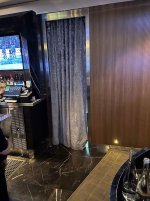 IMG_1168.jpeg496 KB · Views: 36
IMG_1168.jpeg496 KB · Views: 36 -
 IMG_1167.jpeg254.4 KB · Views: 35
IMG_1167.jpeg254.4 KB · Views: 35 -
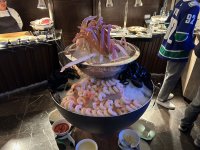 IMG_1165.jpeg254.1 KB · Views: 40
IMG_1165.jpeg254.1 KB · Views: 40 -
 IMG_1163.jpeg308.4 KB · Views: 37
IMG_1163.jpeg308.4 KB · Views: 37 -
 IMG_1166.jpeg237.7 KB · Views: 36
IMG_1166.jpeg237.7 KB · Views: 36 -
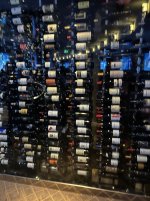 IMG_1162.jpeg339.2 KB · Views: 36
IMG_1162.jpeg339.2 KB · Views: 36 -
 IMG_1161.jpeg267.2 KB · Views: 37
IMG_1161.jpeg267.2 KB · Views: 37 -
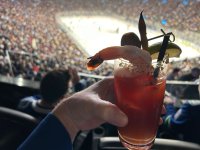 IMG_1173.jpeg132.7 KB · Views: 42
IMG_1173.jpeg132.7 KB · Views: 42
Last edited:
Substitute the salmon with tomato and olive oil instead of the avocado and maybe the bread could be that dried one that you resurge with water...but only in the summer the tomatoes are worth eating
Lately, I've been buying awesome heirloom tomatoes in our local stores. Being indeterminate plants they are easy to grow in SoCal greenhouses.
@Cal Weldon In one of my previous jobs, at Broadcom, the owner had a big interest in the Ducks... and my wife's employer was the Corporate Sponsor of the Honda Center.... so we used to get awesome seats at the Pond. The Broadcom seats were very limited and supposedly they were up to a Lottery... but I made friends with the lady at HR and she always got us two seats if I wanted them. ;-)
Honda had plenty of seats, not as good, but we always got them if my wife asked for a pair.
Not good enough to go behind the curtain, but good enough to sit at the 2nd level, with seat service to our seats and restricted access to the area so the hoi polloi would not bother us.
pico, you substituted all three ingredients. 😆
That's like making mac and cheese and substituting a few ingredients here and there and ending up with tuna casserole.
That's like making mac and cheese and substituting a few ingredients here and there and ending up with tuna casserole.
- Home
- Member Areas
- The Lounge
- The food thread
